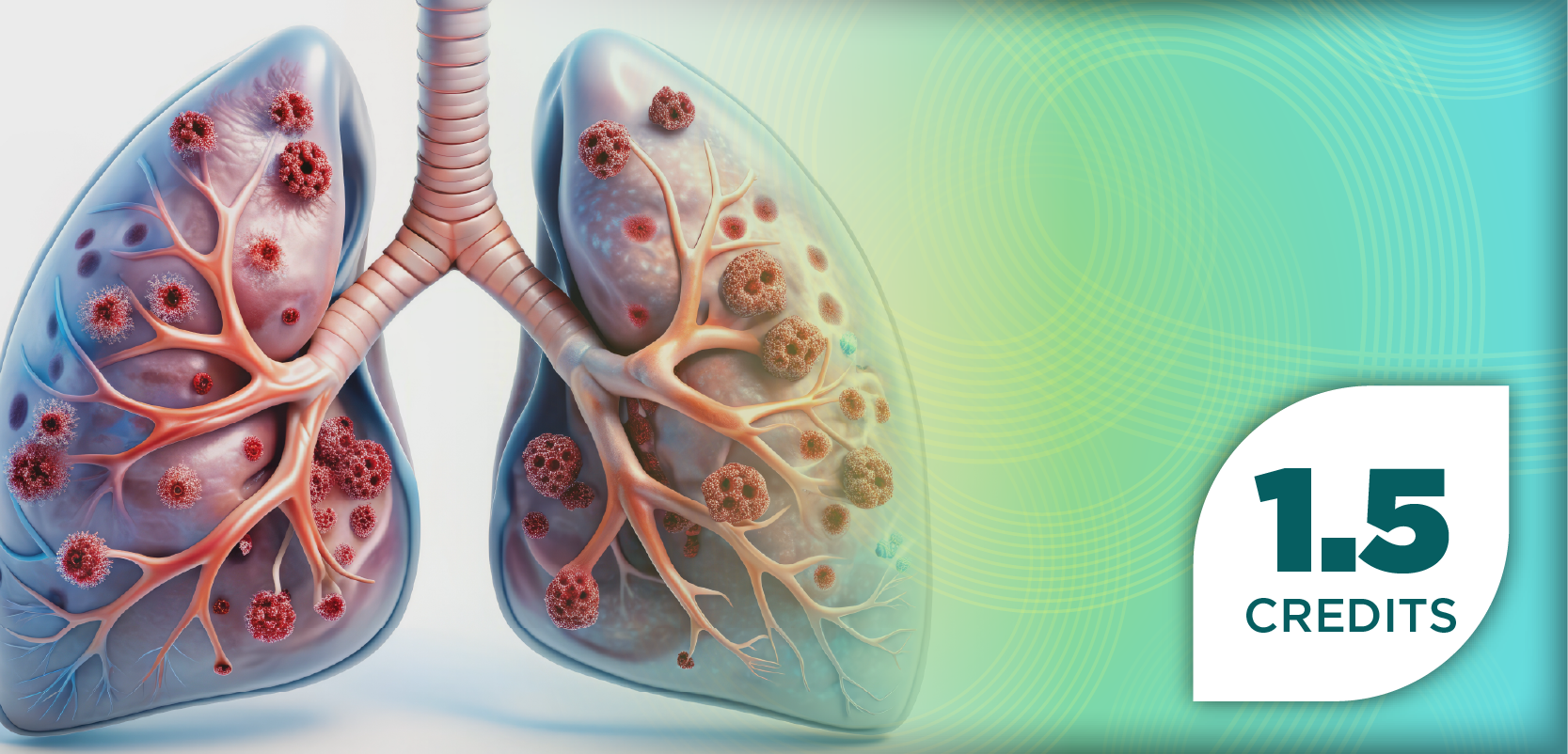
IAS 2025: Pharmacists Steer Modern HIV Care Through Coinfection Management
Key Takeaways
- Long-acting injectables necessitate hepatitis B screening and vaccination due to potential reactivation risks in coinfected individuals.
- Trichloroacetic acid offers a well-tolerated, cost-effective treatment for anal intraepithelial neoplasia in PLWH, with reduced pain compared with electrocautery.
Experts discuss HIV management challenges, including HBV coinfections, anal cancer risks, and weight gain, highlighting innovative treatment strategies.
Although significant advancements for the management of people living with HIV (PLWH) continue to rise, challenges concerning coinfections such as hepatitis B, common comorbidities such as anal intraepithelial neoplasia, and the increasing issue of weight gain in PLWH remain a concern. These insights, presented by experts during a session at the 13th International AIDS Society (IAS) Conference on HIV Session in Nairobi, Kenya, which took place from July 13 to July 17, are helpful for pharmacists and other health care professionals dedicated to comprehensive HIV care.1,2
The discussion featured Ubaldo Bahemuka, MD, from the Medical Research Council (MRC)/Uganda Virus Research Institute (UVRI) and London School of Hygiene and Tropical Medicine (LSHTM) Uganda Research Unit; Stefan Esser, MD, from University Hospital Essen, University Duisburg-Essen, Department of Dermatology and Venereology, Essen, Germany; Richard Elion, MD, clinical professor of medicine at Georgetown George Washington School of Medicine and director of the HIV research program at Washington Health Institute; and John Koethe, MD, associate professor of medicine in the division of infectious disease at Vanderbilt University Medical Center and a director of the Tennessee Center of AIDS Research.1
Together, the experts underscored the move toward optimizing treatment strategies, addressing long-term complications, and integrating new therapeutic options while considering public health implications and individual patient needs.1
Long-Acting Injectables and Hepatitis B Coinfections
IMPALA Study
Bahemuka began the session with a discussion on long-acting injectables (LAIs), considering their safety in countries with high hepatitis B prevalence (HBV). Globally, 5% to 10% of individuals living with HIV are living with HBV, with a high prevalence of chronic HBV infections in most countries in sub-Saharan Africa. Despite this, Bahemuka noted that HBV screening and vaccination rates remain low. Currently, the WHO recommends LAIs like cabotegravir (CAB) and rilpivirine (RPV) for HIV treatment; however, CAB and RPV are not active against HBV, raising concerns about HBV reactivation in co-infected individuals.1
To further increase available evidence around the use of CAB and RPV in individuals with prior HBV infections, researchers conducted an open-label, active-controlled, parallel-group, noninferiority IMPALA trial in Uganda, Kenya, and South Africa, assessing the safety and efficacy of CAB plus RPV in virally suppressed individuals, specifically monitoring for HBV or reactivation.1
Bahemuka shared that out of 845 screened individuals, 9.9% were excluded due to HBV-related reasons, emphasizing the significant challenge for LAI implementation in this patient population.1
Results from a follow-up demonstrated that 30% of screened individuals had evidence of chronic or prior infection. Only 7.8% of those randomly assigned had evidence of vaccine-mediated immunity. Regarding the risk of de novo infection, Bahemuka noted that 1 incident of HBV infection occurred in an individual in the LAI arm who lacked vaccine-mediated immunity.1
The findings shared by Bahemuka suggest that prioritizing HBV screening and strengthening vaccination efforts are crucial for safe LAI use in PLWH.1
“As we evaluate patients for switching to the long-acting [CAB], we really have to screen for hepatitis B,” Bahemuka said in the discussion. “The findings from this study really reiterate and demonstrate the need to strengthen hepatitis B vaccination, especially for people who are to be considered to switch to the long-acting [CAB] and [RPV].”1
Managing Anal Intraepithelial Neoplasia
TECIAN Study
According to Esser, PLWH have a substantially higher risk of human papillomavirus (HPV)-associated anal cancer, which often develops from precancerous lesions like anal intraepithelial neoplasia (AIN). Screening and treatment of AIN are recommended to reduce anal cancer risk, but current treatment options are suboptimal and have high recurrence rates.1
In the discussion, Esser shared results from the prospective, randomized, open-label, multicenter, noninferiority trial that aimed to determine the efficacy and safety of topical trichloroacetic acid (TCA) vs electrocautery (ECA) for AIN treatment in PLWH.1
The results demonstrated that although TCA’s noninferiority to ECA was not shown at 4 weeks post treatment, TCA was noninferior to ECA at 24 weeks after the last treatment, with therapeutic success rates of 51% for TCA and 49% for ECA. Reduced pain was reported in the TCA group, with more frequent intraoperative pain in the ECA group despite 10 times more anesthesia use.1
Esser noted that the findings emphasize TCA as a well-tolerated, cost-effective, and simple treatment option for individuals with AIN and HIV. "TCA treatment of IN does not require the complex technical equipment and can be applied without anesthesia in a normal doctor's office by physicians who do not have proctological training,” he concluded.1
Weight Gain in PLWH
In his discussion, Elion featured a retrospective observational US-based study that explored predictors of weight gain and the impact of antiretroviral therapy (ART) regimen switches on weight.1
The aim of the study was to identify key predictors of significant weight gain—classified as greater than 10% with a shift to a higher body mass index (BMI) category or baseline obesity—in virally suppressed treatment-experienced PLWH in the US over a 3-year period, compared with those with minimal weight gain.1
The results demonstrated that 12% of PLWH experienced weight gain, whereas 41% lost or did not gain weight. Additionally, the main sociodemographic and clinical factors linked with increased weight gain were younger age, Black race, female gender, and a lower baseline CD4 count.1
“The clinical significance [of the findings] was that we showed that the factors of ART teams did not influence this gain, but what did influence it were social and demographic factors, such as we listed previously,” Elion noted in the discussion. "These findings further support that weight gain observed with people living with HIV is reflective of trends in the general population and community characteristics rather than the direct effects of antiretroviral therapy.”1
ART Regimen Changes and Weight Loss
“DO-IT” Trial
A growing proportion of PLWH are experiencing obesity, leading to increased risk of comorbidities like diabetes and cardiovascular disease. Past studies have linked weight gain to integrase inhibitors (INSTIs) and tenofovir alafenamide (TAF) compared with tenofovir disoproxil fumarate (TDF). According to Koethe, the 48-week, 3-parallel-group, open-label, multicenter, superiority, randomized, controlled A5391 “DO-IT” trial was conducted to assess whether switching from an INSTI and TAF-containing regimen to doravirine (DOR), with or without a concomitant switch from TAF to TDF, would lead to weight reduction in PLWH and obesity.1
Koethe noted that the study specifically targeted a cohort of at least half female and half Black participants, who are a population known to be at higher risk of weight gain on ART.1
The results demonstrated that in all 3 study arms—continuing INSTI plus TAF, switching to DOR plus TAF, or switching to DOR plus TDF—some weight loss was observed, but there was no significant evidence that switching to DOR with either TAF or TDF significantly affected weight changes compared with continuing the original INSTI plus TAF regimen at 48 weeks. Koethe also shared that the CIs were within 5 percentage points, suggesting no clinically relevant effect.1
“A5391 provides robust evidence that ART regimen changes are not effective in reducing weight among obese individuals with HIV, and other interventions will be needed to reduce weight-related comorbidities in this population,” he concluded.1
Pharmacists' Role in Navigating HIV Care
Based on the discussion, pharmacists could aid the navigation of HIV care in various factors. First, pharmacists play a critical role in reinforcing the need to prioritize HBV screening and vaccination for individuals considering LAIs. This approach is crucial for the safe implementation of LAIs. Pharmacists can also recognize and advocate for TCA as a valuable treatment option for AIN. Additionally, they should also be aware of TCA as an accessible, less painful, and effective alternative for AIN, which can help expand access to care and improve patient experience. Lastly, pharmacists can shift focus beyond ART regimens switched for weight management in PLWH and should understand that ART modifications are unlikely to be a primary weight loss strategy. Instead, pharmacists can counsel on comprehensive lifestyle interventions, such as diet and exercise, and support broader, community-based weight management strategies, mirroring approaches in the general population.1
REFERENCES
1. Bahemuka U, Esser S, Elion R, et al. A multitude of complications. Presented: the 13th IAS Conference on HIV Science. July 13-17, 2025. Nairobi, Kenya. Accessed via Virtual Platform on July 28, 2025. https://conference.ias2025.org/media-1189-a-multitude-of-complications
2. CDC. About HIV. January 14, 2025. Accessed July 28, 2025. https://www.cdc.gov/hiv/about/index.html#:~:text=HIV%20(human%20immunodeficiency%20virus)%20is,is%20currently%20no%20effective%20cure.
Newsletter
Stay informed on drug updates, treatment guidelines, and pharmacy practice trends—subscribe to Pharmacy Times for weekly clinical insights.


















































































































































































































